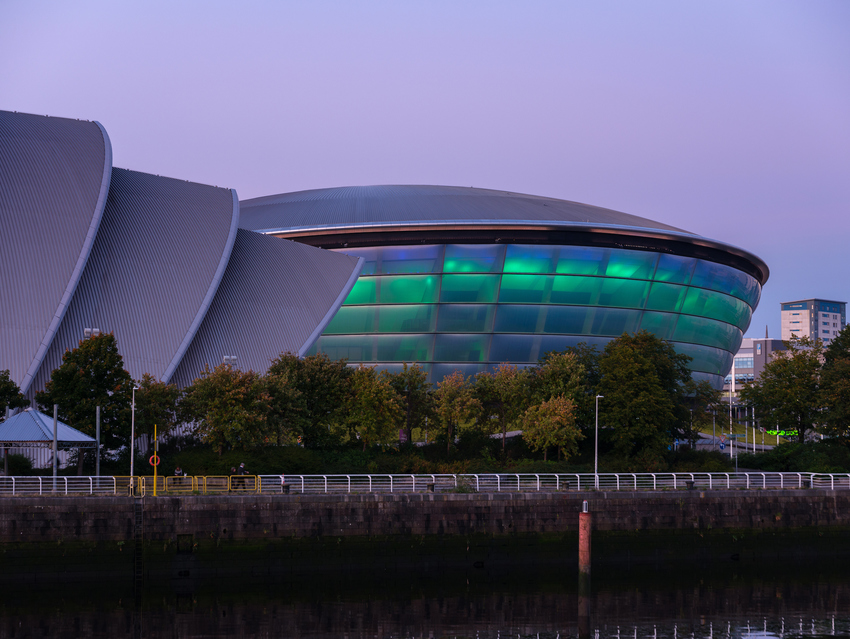Ten Years of City Deal Investment
4th Oct 2024

The UK and Scottish governments joined local leaders to mark ten years of the Glasgow City Region City Deal and to reflect on what has been achieved through the £1.13 billion of funding.
One of the largest and the most advanced in the UK, Glasgow’s Deal has delivered a range of high-profile projects such as Greenock Ocean Terminal, the bridge over the M8 at Sighthill and the Govan to Partick bridge - with the new Renfrew bridge (pictured) set to open later this year.
The eight participating member authorities for the Glasgow City Region City Deal are East Dunbartonshire Council, East Renfrewshire Council, Glasgow City Council, Inverclyde Council, North Lanarkshire Council, Renfrewshire Council, South Lanarkshire Council and West Dunbartonshire Council.
Susan Aitken, Leader of Glasgow City Council and Chair of the Glasgow City Region Cabinet which oversees the Deal said: “The City Deal has been a catalyst for transformation across the Glasgow City Region in the past decade. Major infrastructure projects have not only built new homes, improved connectivity and transformed public realm, but have also created and sustained thousands of jobs and supported local businesses; while dynamic new sectors of our economy have been nurtured and grown. The City Deal continues to deliver for our citizens and communities.”
Investment Minister Tom Arthur said: “The Glasgow City Region Deal has been instrumental to unlocking millions of pounds worth of investment in Greater Glasgow. This has delivered new jobs, businesses and transport projects to build prosperity across the region. We are working closely with partners to maximise the benefits of regional working.
“I look forward to seeing the Deal progress with the completion of projects such as the Renfrew-Yoker Bridge which is due to open later this year.”
Secretary of State for Scotland Ian Murray said: “Economic growth is one of the key missions of the UK Government and the thriving projects in Glasgow City Region are helping to achieve that. The way has been paved for new housing and commercial developments, investment in technology has resulted in state-of-the-art medical research facilities, and improved connectivity is removing barriers to work.
“It’s encouraging to see the amount of private investment generated that will continue to benefit the people of the wider Glasgow area and beyond.”
Signed in 2014, Glasgow’s Deal provides £500 million each from the UK and Scottish governments for a range of infrastructure, employability and innovation projects with the eight local councils contributing a further £130 million.
Over the past ten years, the Region has undergone a period of epic transformation supported by the City Deal.
City Deal employability programmes have supported almost 14,000 people into work. The Tontine business accelerator has championed new SME start-ups in the heart of Glasgow and the Queen Elizabeth University hospital Imaging Centre of Excellence, a state-of the-art medical research facility, houses the first 7T MRI imagine system in a clinical setting. The Smart Canal, a first in Europe, is a pioneering new surface water drainage system which is helping to unlock 110 hectares across the north of Glasgow for new housing and commercial development.
All City Deal infrastructure projects are underway with 45 sub-projects now complete.
The Region’s residents are better connected thanks to the City Deal with new and improved cycle and pedestrian routes, bridges, upgraded roads and railway stations such as Motherwell Transport Interchange, providing better access to local town centres and beyond.
Together with a programme of remediation, the City Deal is freeing up land in key locations for housing and commercial development across the whole Region including at Barrhead, Bishopbriggs, Inverkip, Ravenscraig, Bowling and at various sites in South Lanarkshire’s Community Growth Areas.
In fact, the Region’s City Deal is estimated to have attracted over £880 million worth of follow-on investment since 2014 for new housing and commercial development already completed or underway at locations around City Deal projects. For example, City Deal funded remediation and work to improve connectivity at Tradeston in Glasgow has opened up an area south of the river to commercial development, with the new Barclays Campus the biggest inward investment ever in Scotland.
A further £65 million of additional external funding has also been generated from other organisations and agencies for City Deal projects in the ten-year period.
The City Deal is also helping businesses and communities. Over £150 million of City Deal contracts have been won so far by local businesses, and 330 employment opportunities such as apprenticeships have been secured for local people and young people.
On the back of the Deal, the Region has been granted extensive funding for further key programmes from the UK and Scottish Governments including the £74 million UK Shared Prosperity Fund Investment Plan, the £160 million Investment Zone, a £25 million low Carbon Masterplan for the Clyde and the £33 million Innovation Accelerator programme.
Susan Aitken added: “Over the past decade the City Deal has been critical to advancing our truly world-class knowledge-based economy and the internationally-recognised specialisms emerging from the Glasgow City Region’s three Innovation Districts. These are sectors with enormous potential for growth, future-proofing jobs and ensuring our citizens have the skills to grasp opportunities for the future. They have firmly established Glasgow as one of the world’s leading innovation regions.”
The Region’s Innovation Action Plan, developed with Innovate UK and Scottish Enterprise, sets a clear plan for to drive the local innovation economy, working in partnership with business, public sector and academic institutions and aligned with government innovation strategies.
Funding bids for the Innovation Accelerator Programme, the Investment Zone and the recent 5G Innovation Fund were vastly over-subscribed demonstrating the level of opportunity in these dynamic and growing sectors.


